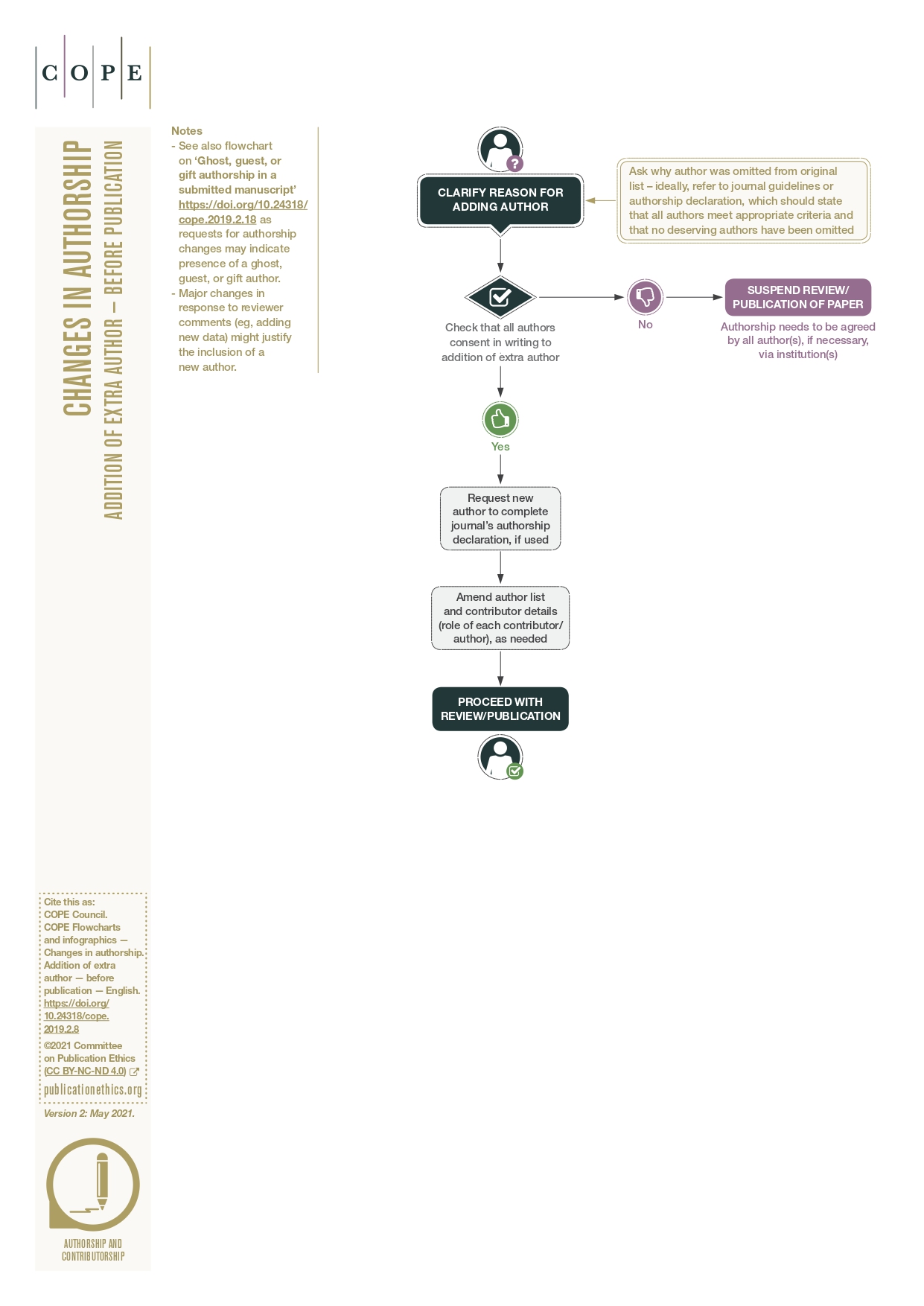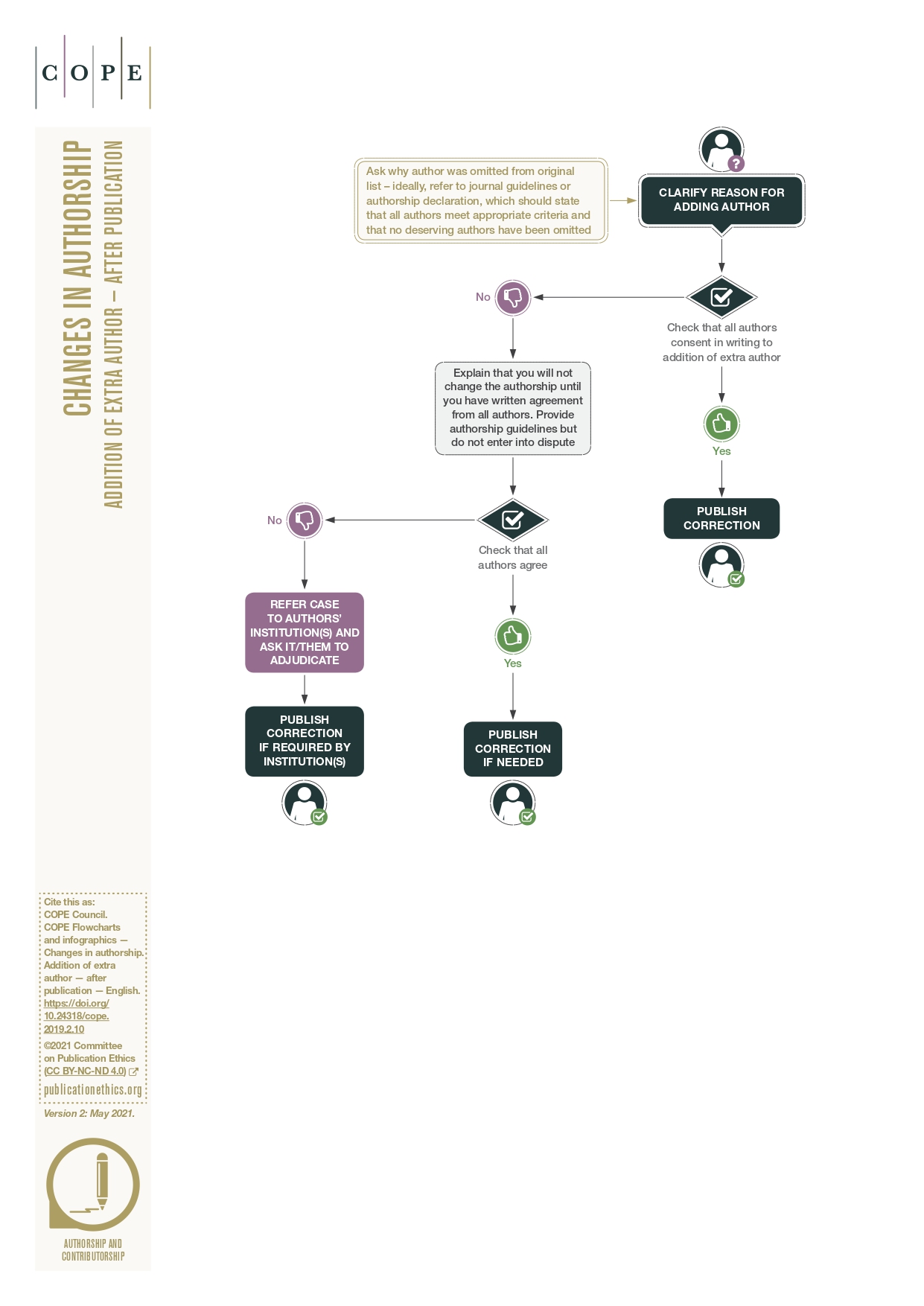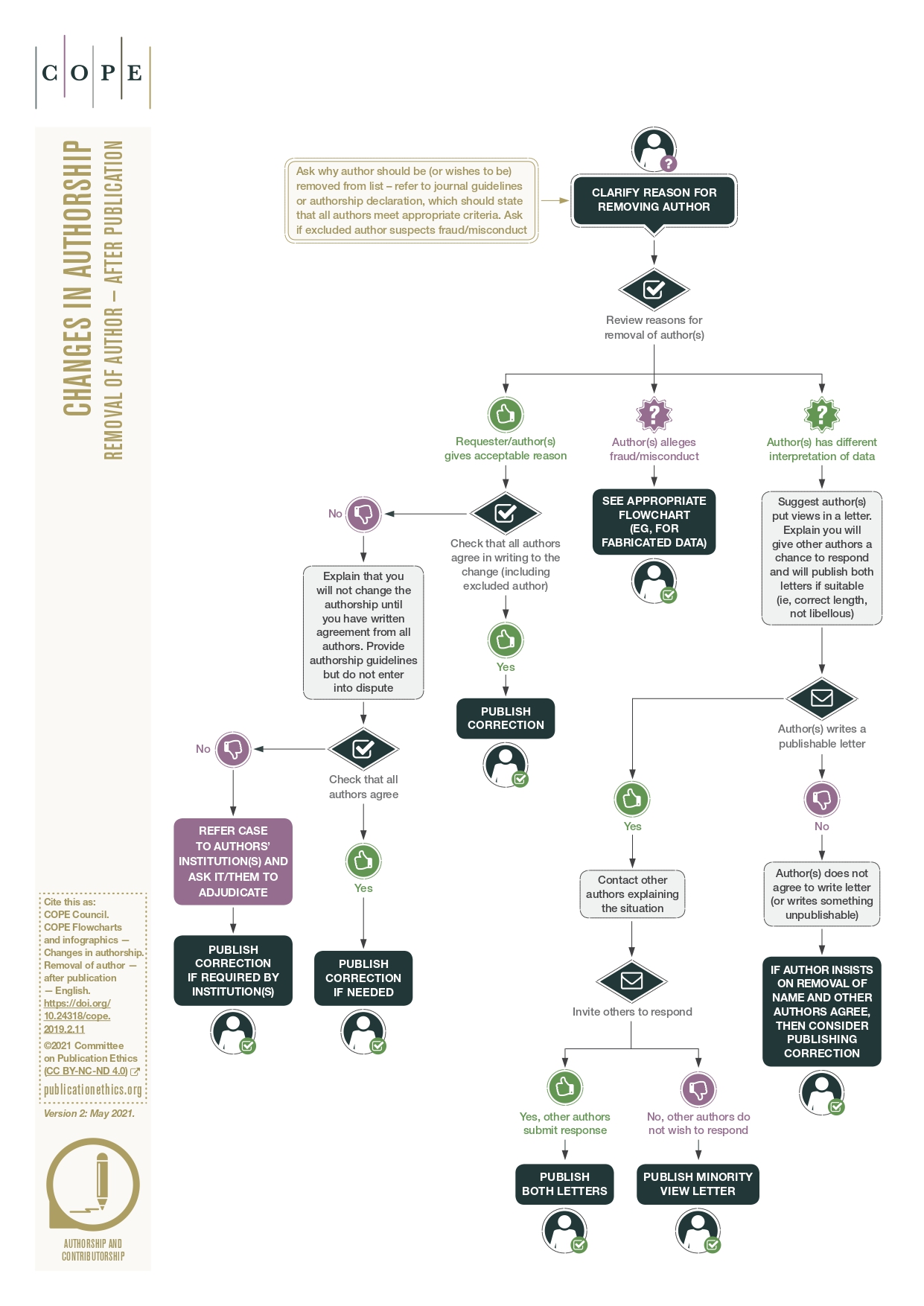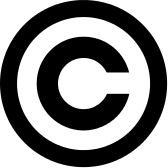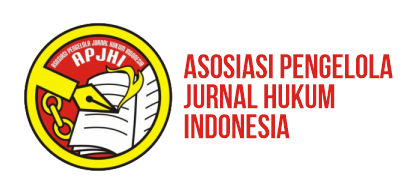About the Journal
Focus and Scope
This journal provides a venue for experts, academicians, practitioners, state officials, non-governmental organizations, and observers of constitutional law to disseminate research results or conceptual studies on constitutions, constitutional court decisions worldwide, and topics on constitutional law that have not been published elsewhere.
Peer Review Process
All papers are fully peer-reviewed. We only publish articles that have been reviewed and approved by highly qualified researchers with expertise in a field appropriate (at least two reviewers per article). We used double-blind peer-reviewing process. Detailed information about the flow for the manuscript submission (author) to the acceptance by editor is shown in the following figure.
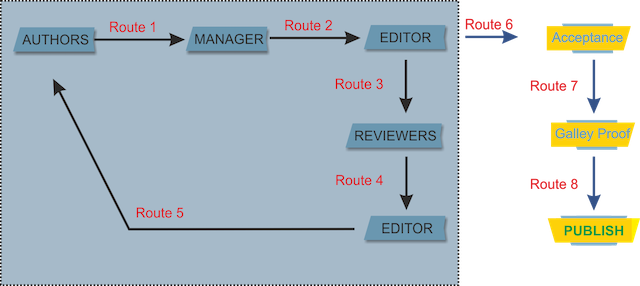
In short, the steps are:
- Manuscript Submission (by author) (route 1)
- Manuscript Check and Selection (by manager and editors) (route 2). Editors have a right to directly accept, reject, or review. Prior to further processing steps, plagiarism check using Turnitin is applied for each manuscript.
- Manuscript Reviewing Process (by reviewers) (route 3-4)
- Notification of Manuscript Acceptance, Revision, or Rejection (by editor to author based on reviewers comments) (route 5)
- Paper Revision (by author)
- Revision Submission based on Reviewer Suggestion (by author) with the similar flow to point number 1. (route 1)
- If the reviewer seems to be satisfied with revision, notification for acceptance (by editor). (route 6)
- Galley proof and publishing process (route 7 and 8)
The steps point number 1 to 5 are considered as 1 round of the peer-reviewing process (see the grey area in the figure). The editor or editorial board considers the feedback provided by the peer reviewers and arrives at a decision. The following are the most common decisions:
- Accepted, as it is. The journal will publish the paper in its original form;
- Accepted by Minor Revisions, the journal will publish the paper and asks the author to make small corrections (let authors revised with stipulated time);
- Accepted by Major Revisions, the journal will publish the paper provided the authors make the changes suggested by the reviewers and/or editors (let authors revised with stipulated time);
- Resubmit (conditional rejection), the journal is willing to reconsider the paper in another round of decision making after the authors make major changes;
- Rejected (outright rejection), the journal will not publish the paper or reconsider it even if the authors make major revisions.
Publication Frequency
Jurnal Konstitusi is a journal published by the Registrar and Secretariat General of the Constitutional Court of the Republic of Indonesia. The journal is published regularly four times a year in March, June, September, and December.
Open Access Policy
This journal provides immediate open access to its content on the principle that making research freely available to the public supports a greater global exchange of knowledge.

Jurnal Konstitusi by The Registrar and Secretariat General of the Constitutional Court of the Republic of Indonesia is licensed under a Creative Commons Attribution-NonCommercial-ShareAlike 4.0 International License.
Article Processing Charges (APCs)
Jurnal Konstitusi welcomes article submissions and does not charge Article Processing Charges (APCs).
Article Submission: 0.00 (USD)
Authors are not required to pay an Article Submission Fee as part of the submission process to contribute to review costs.
Article Publication Charges (APCs): 0.00 (USD)
For Libraries/Individuals, can read and download any full-text articles for free of charge.
Plagiarism Policy
- Plagiarism and self-plagiarism are not allowed;
- The authors should ensure that they have written entirely original works, and if the authors have used the work and/or words of others that this has been appropriately cited or quoted;
- An author should not in general publish manuscripts describing essentially the same research in more than one journal or primary publication. Submitting the same manuscript to more than one journal concurrently constitutes unethical publishing behavior and is unacceptable;
- Proper acknowledgment of the work of others must always be given. Authors should cite publications that have been influential in determining the nature of the reported work.
Working Process:
- Editorial Team checking manuscript on offline and online database manually (checking proper citation and quotation);
- Editorial Team checking manuscript by using Turnitin app. If it is found plagiarism indication (more than 20%), the board will reject the manuscript immediately.
Retraction, Withdrawal, & Correction Policy
Policy Statement
Jurnal Konstitusi (JK) acknowledges that the author(s) have worked hard in preparing the manuscript and patiently followed the Journal's peer-review procedures. However, there is also the possibility for published papers to be removed or even withdrawn for research purposes. Consequently, corrections, clarifications, retractions, and apologies, if necessary, because the article has been found violates the ethics. Those processes will also be carried out with strict criteria to preserve confidence in the authority of its electronic archives. Our dedication and strategy are to maintain the quality and completeness of relevant scientific documents in the collections of researchers and librarians.
Article Retraction
A retraction is carried out if an article is indicated to have an Infringement of scientific or ethical codes, such as double submissions, false claims of authorship, plagiarism, fraudulent use of data, fake authors or the like. Also, a retraction will be used to correct errors in submission or publication. A retraction of an article by the author or Editor under the editorial board's advice of the JK. There are several forms of recreation carried out by JK, i.e.:
- If the infringements of the scientific code of ethics are indicated before the article is published, the Editor will return the manuscript to the author accompanied by a retraction letter from the Chief Editor;
- If the infringements of the scientific code of ethics are indicated after the article is published, several mechanisms can occur:
- The online article is preceded by a screen containing the retraction note. It is to this screen that the link resolves; the reader can then proceed to the article itself.
- The original article is retained unchanged save for a watermark on the .pdf indicating on each page that it is "retracted."
- The HTML version of the document is removed.
In order to ensure that retractions are conducted in compliance with the best practice of publishing and the COPE Retraction Guidelines, JK adopts the following retraction process:
- An article shall be brought to the attention of the Editor of the Journal.
- The Editor of the Journal should obey the step-by-step instructions according to the COPE flowcharts (including evaluating a response from the author of the article in question).
- Before any decision is taken, the reports of the Editor should be forwarded to the editorial board of the JK, which will be a forum to provide advice and recommendations regarding ethical issues. This stage aims to ensure a consistent approach in line with ethical practices.
- The final decision on whether to withdraw is then conveyed to the author and, if necessary, to all other relevant bodies, such as the institution affiliated.
- The Retraction Statement is posted online and released in the next available journal issue.
Article Withdrawal
This circumstance can occur if the initial version of the article contains an error or may have been accidentally sent twice to both JK and/or a different publisher. In addition, it can also occur due to an element of Infringements of the scientific code of ethics, such as double submissions, false claims of authorship, plagiarism, self-plagiarism, fraudulent use of data or the like. Articles that meet the element of Infringements of the code of ethics upon the author's awareness can make a withdrawal of his article accompanied by a letter of statement withdrawal addressed to the editorial board of JK.
Article Correction
JK should consider issuing a correction if:
- A small part of an otherwise reliable publication reports flawed data or proves to be misleading, especially if this is the result of honest error.
- The Author or Contributor list is incorrect (e.g. a deserving Author has been omitted or someone who does not meet authorship criteria has been included).
Corrections to peer-reviewed content fall into one of three categories:
- Publisher correction (erratum): to notify readers of a significant error made by publishing/journal staff (usually a production error) that has a negative impact on the publication record or the scientific integrity of the article or the reputation of the Authors or the Journal.
- Author correction (corrigendum): to notify readers of a significant error made by the Authors which harms the publication record, the scientific integrity of the article, or the reputation of the Authors or the Journal.
- Addendum: an addition to the article by its Authors to explain inconsistencies, expand the existing work, or otherwise explain or update the information in the main work.
Whether a correction should be issued is made by the Editor (s) of a journal, sometimes with advice from Reviewers or Editorial Board members. Handling Editors will contact the Authors of the paper concerned with a request for clarification, but the final decision about whether a correction is required and, if so, which type rests with the Editors.
Article removal: legal limitations
In a minimal number of cases, it may be necessary to remove an article from the online database of JK. This will only occur where the paper is defamatory, hoaxed, infringes others' legal rights, a court order, and endangers state security. While the metadata (Title and Authors) will be retained, the text will be replaced with a screen indicating the article has been removed for legal reasons.
Article replacement
In cases where the article, if acted upon, might pose a serious risk, the authors of the original article may wish to retract the flawed original and replace it with a corrected version. In these circumstances, the procedures for retraction will be followed with the difference that the database retraction notice will publish a link to the updated re-published article and a history of the document.
Changes in Authorship
